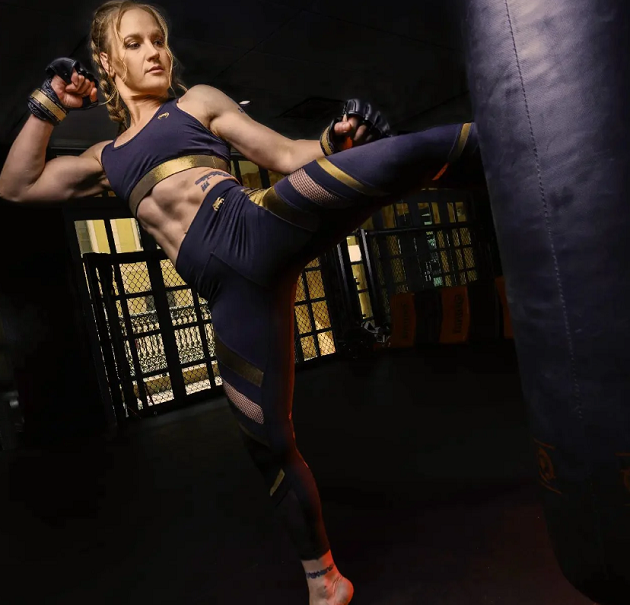MMA Gear: Discover the Essential Equipment for Training and Competition
If you’re entering the mixed martial arts world, you need the right equipment to train both safely and effectively. MMA is not just about mastering the art, it’s also about protecting yourself while you are acquiring the skills. If you think your regular gym clothes and minimal equipment will be enough, think again. This is a contact sport, so be prepared to take a lot of punches. Your body will thank you if you shell out the money for good gear from the beginning.
What MMA Equipment Do I Need?
Investing in premium-quality equipment from professional MMA stores is vital for anyone serious about their practice. It ensures safety, enhances performance and allows for effective skill development. The absolute bare necessities you’re going to need are quality hand wraps, MMA gloves and a mouthguard.
Hand wraps provide the much-needed wrist support as well as protection for your knuckles when wearing gloves. MMA gloves (4-6 oz) allow for grappling while also shielding your hands when punching. And never train without a mouthguard unless you enjoy dental work becoming part of your MMA experience.
Striking Gear: Beyond the Basics
If you’re focusing on the striking aspect of MMA, you will need some top-quality equipment from specialised MMA stores. Heavy boxing gloves (12-16 oz) are essential for heavy bag work and sparring – they provide the padding necessary to avoid damaging your hands when you’re performing repetitive strikes. A good pair will last you years if you take care of them.
Thai pads and focus mitts are great for partner workouts, allowing you to work on technique, timing and power. Working out solo? A freestanding heavy bag is worth every penny. I’ve spent hours performing combinations on mine, and it’s probably the best tool for developing striking power and endurance. Don’t forget shin guards for when practising kick drills with a partner. Those shin-on-shin impacts without protection will have you limping for days.

Grappling Essentials: The Ground Game
The grappling part of MMA requires its own gear. A good rashguard is non-negotiable as it prevents mat burn, reduces skin infections and wicks away sweat during intense sessions of rolling. Pair this with top-notch fight shorts that provide adequate range of motion.
For serious BJJ training components, a suitable gi (kimono) may be necessary, though most MMA fighters focus on no-gi training. Proper grappling or wrestling shoes provide ankle support and traction for takedown drills, though you must get used to training without them as well because they are forbidden within the cage. Knee pads are often underrated but can be a lifesaver if you’re training for hours on hard mats. Your joints will thank you years down the line.
Protection Gear: Don’t Get Shut Out
There is nothing that prevents progress as much as unnecessary injuries. A groin protector is absolutely essential. Chest protectors are also available and are highly recommended for women.
Headgear is somewhat controversial in MMA training. Some fighters prefer to wear it during sparring so they won’t get cuts and ear injuries, and others believe that it gets in the way of visibility and gives a false sense of confidence. If you’re going to fight, you’ll have to learn to do without, but if you’re training, it can extend your career.
Training Accessories: The Performance Enhancers
Beyond protective gear, there are a few accessories that you can find at your local MMA store that will help take your training to the next level. A good jump rope is a must for cardio and footwork drills. Resistance bands help with mobility work and injury prevention. A foam roller and lacrosse ball will be your new best friends for rolling out those tender knots after training.
A timer application or designated gym timer can allow you to schedule your rounds and rests and simulate fight scenarios. For monitoring actual progress, a heart rate monitor and a fitness tracker can be used to monitor your conditioning gains.

Competition Requirements: What You Need on Fight Night
If you’re fighting competitively, familiarise yourself with your organisation’s gear requirements. Most promotions provide gloves, but you’ll typically need to bring your own mouthguard, groin guard and regulation-compliant fight shorts and rashguard. Many fighters have a customised competition mouthguard that’s created by a dentist for the best protection and breathing. It’s an expense worth considering if you’re fighting often. If not, find a good one at the MMA fight store.
Maintenance Matters: Taking Care of Your Gear
Good MMA gear doesn’t come cheap, so it’s worth taking care of. Air your gloves after each session and give them a spray of antibacterial solution so they don’t turn into science experiments. Wash your rashguards, shorts and hand wraps after each use – cleanliness is not up for debate in fighting sports.
To Wrap Up
Ultimately, what you choose will be based on your training goals and your budget. Start with the essentials and gradually build your kit as you progress. Remember, though, that even the best gear in the world isn’t going to make you a better fighter – mastering that craft takes dedication and effort on your part. But the right gear will keep you safe and comfortable as you put in the hours you need on the mats and in the cage.